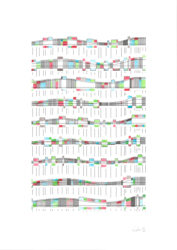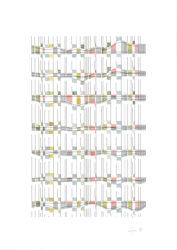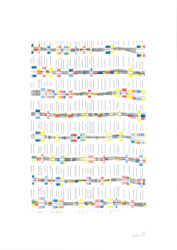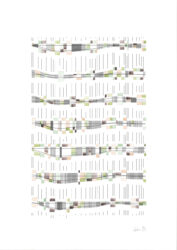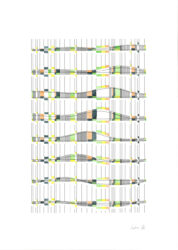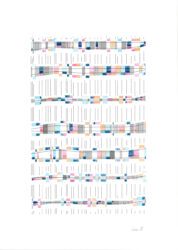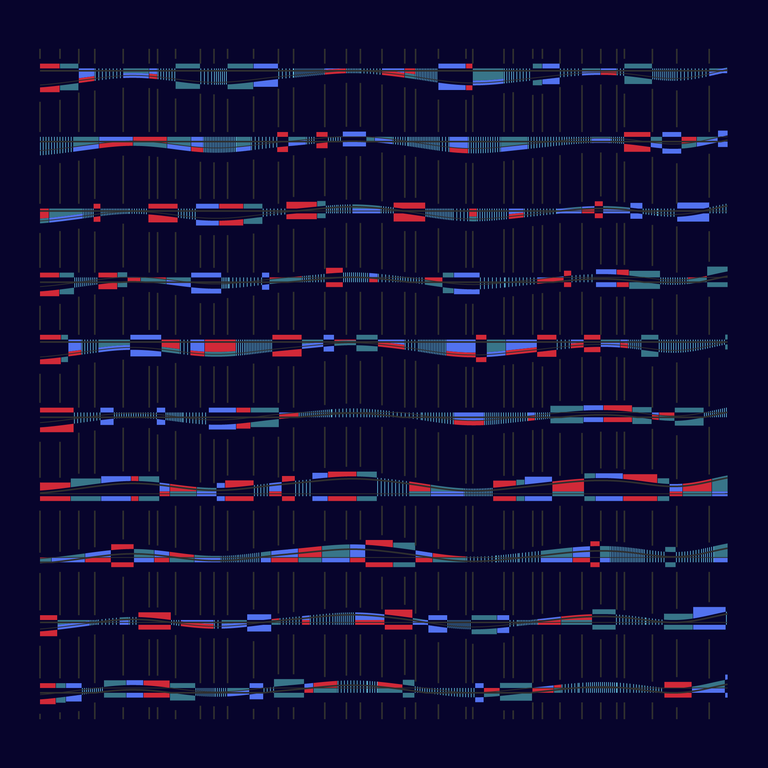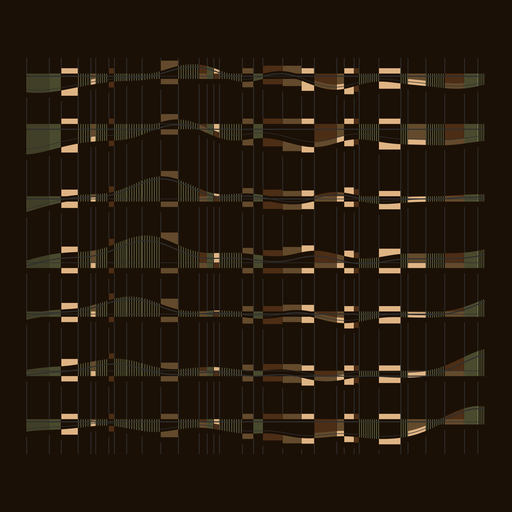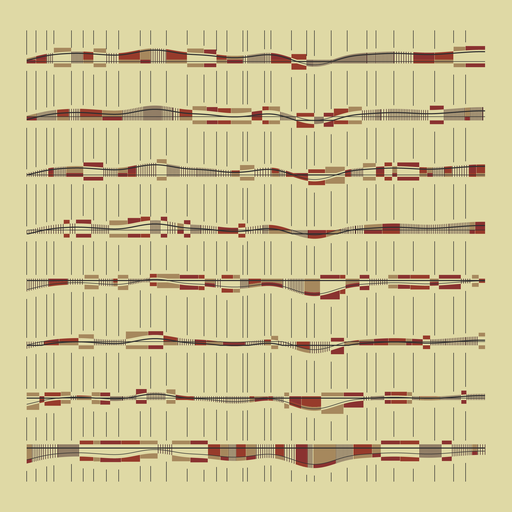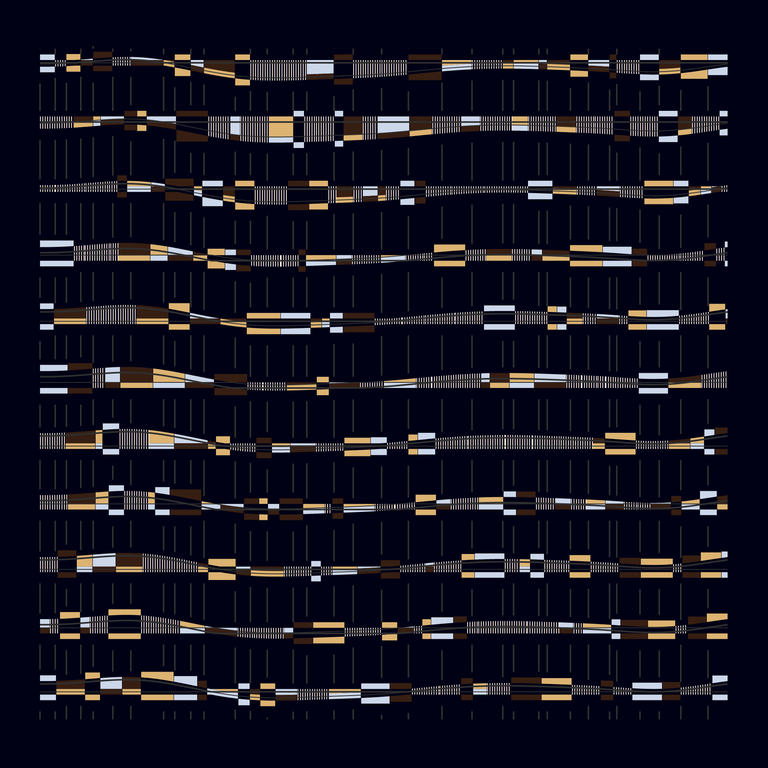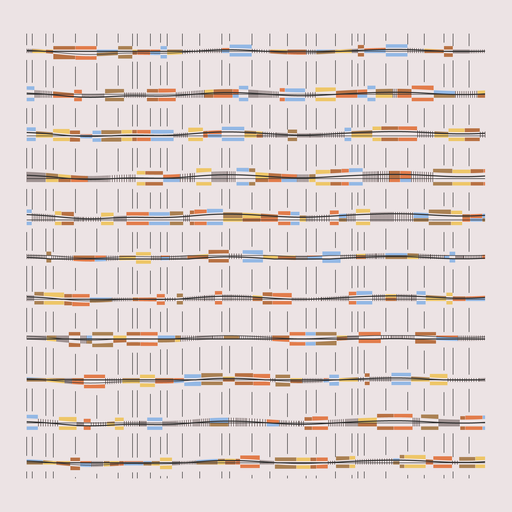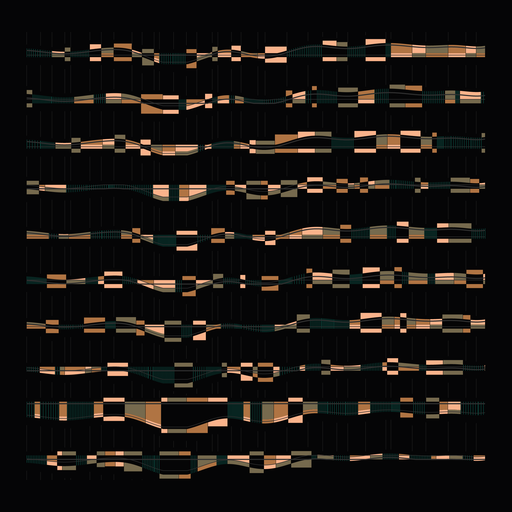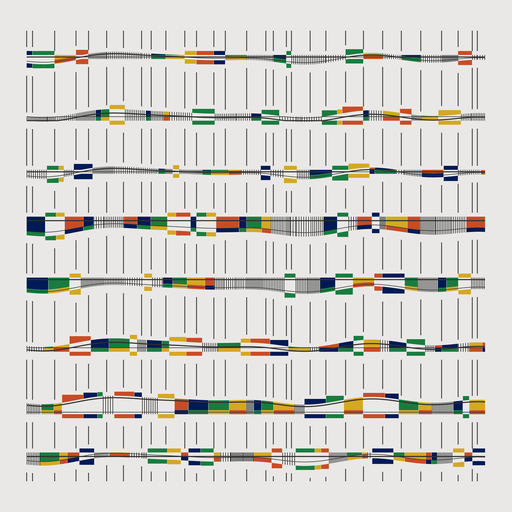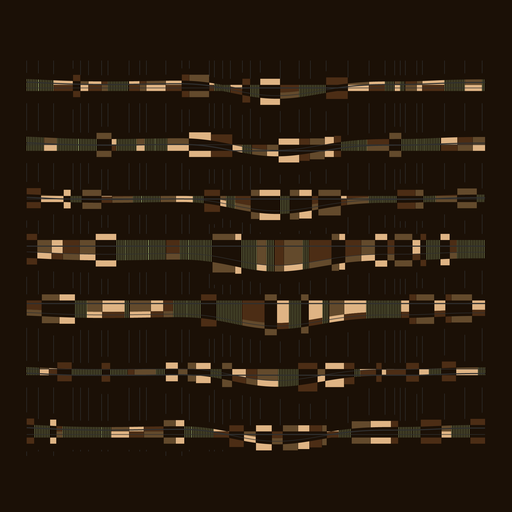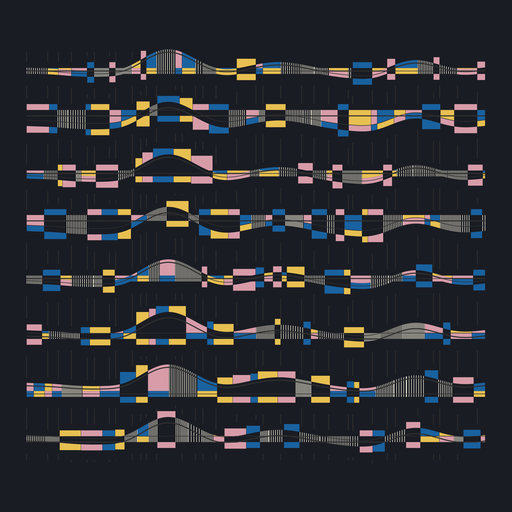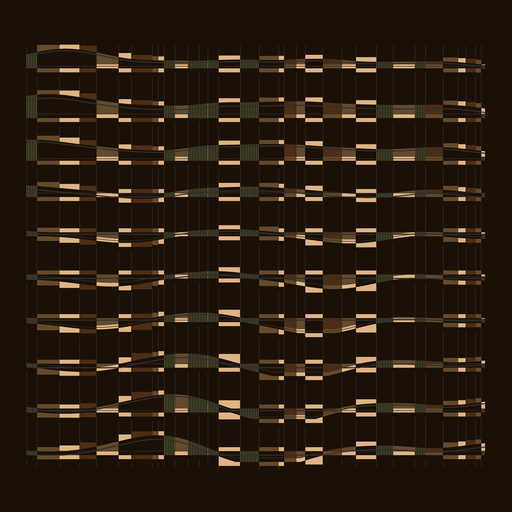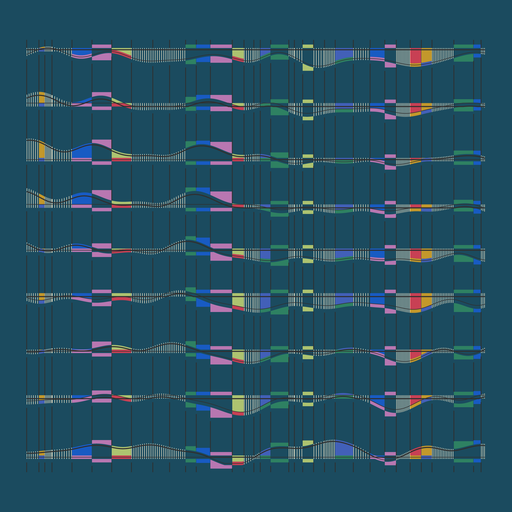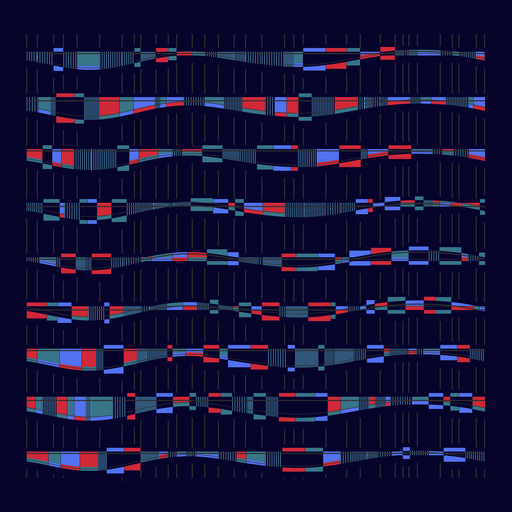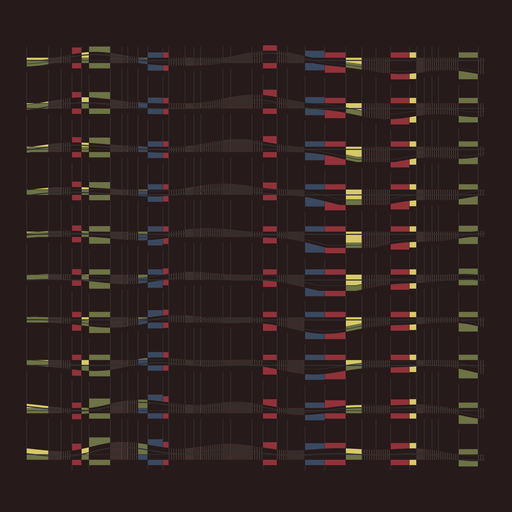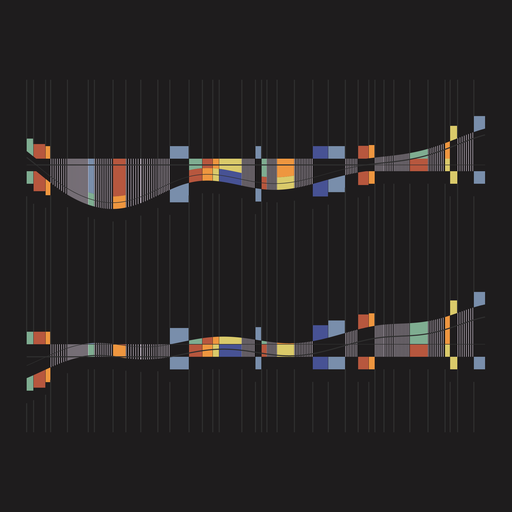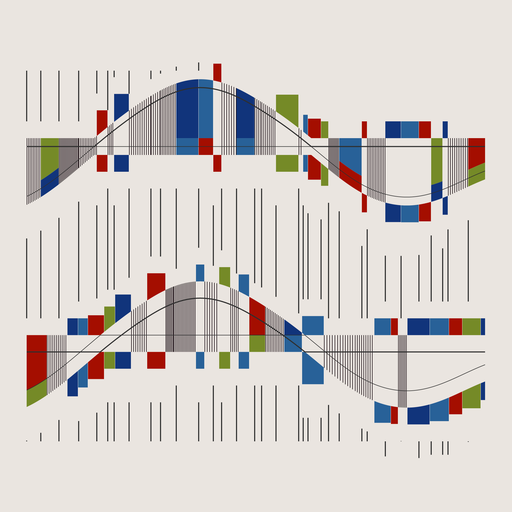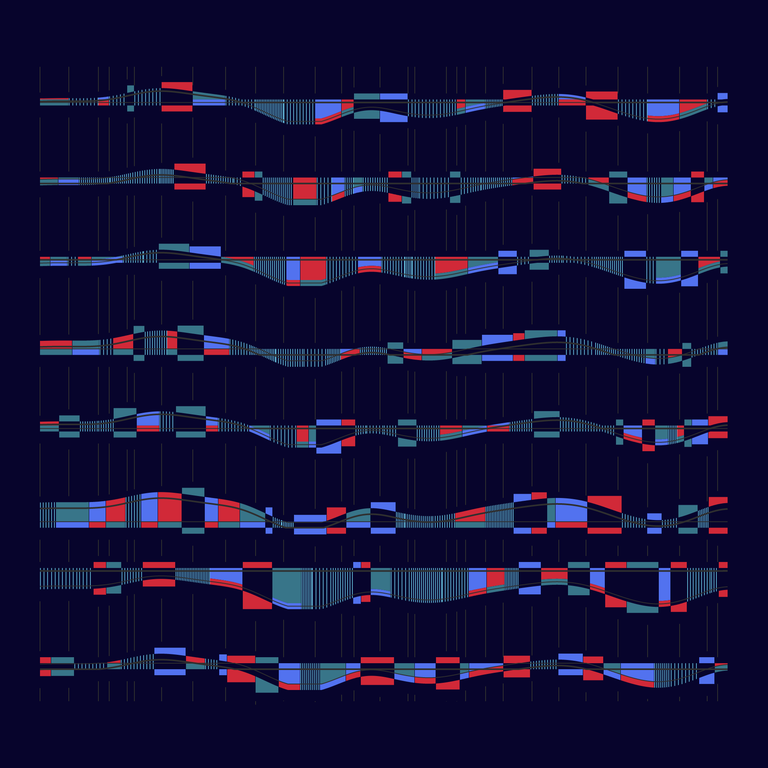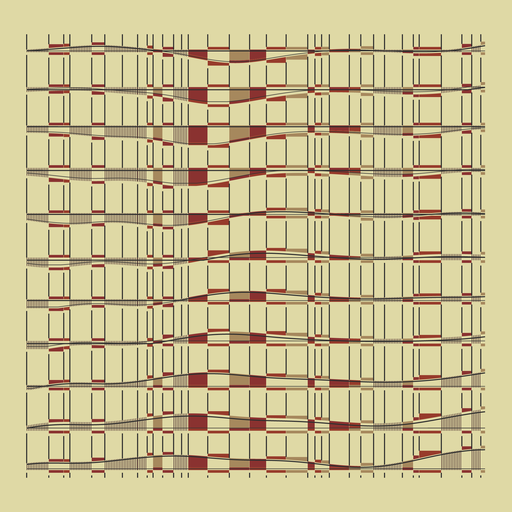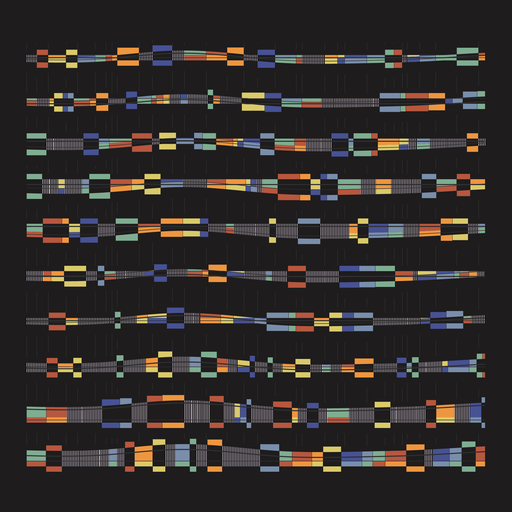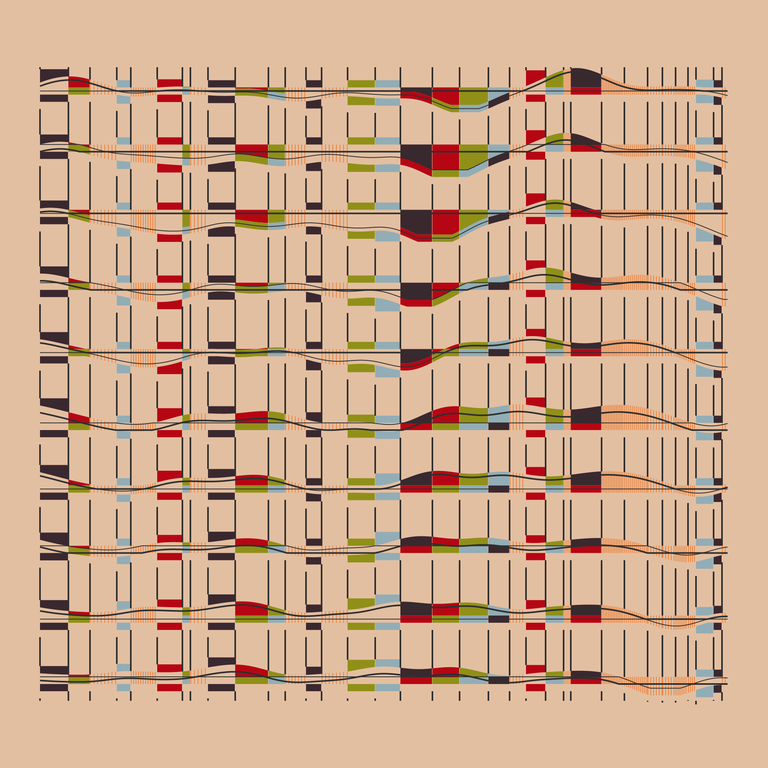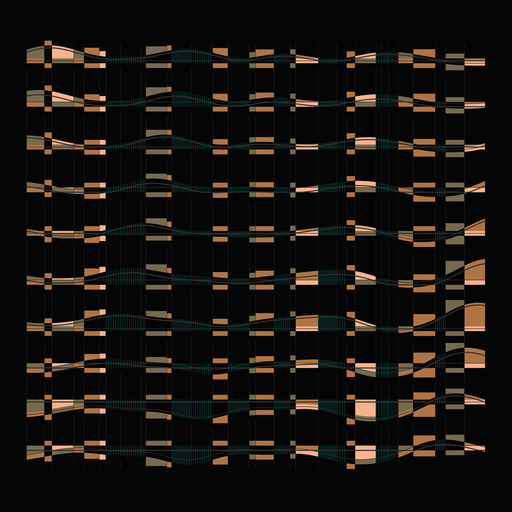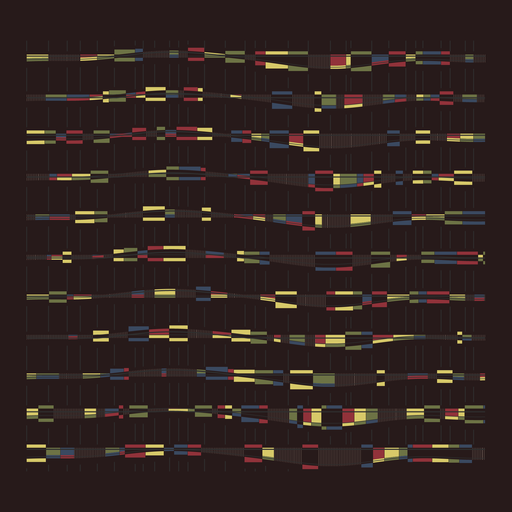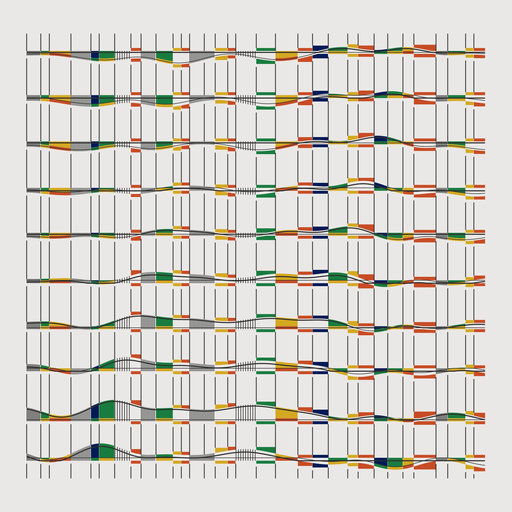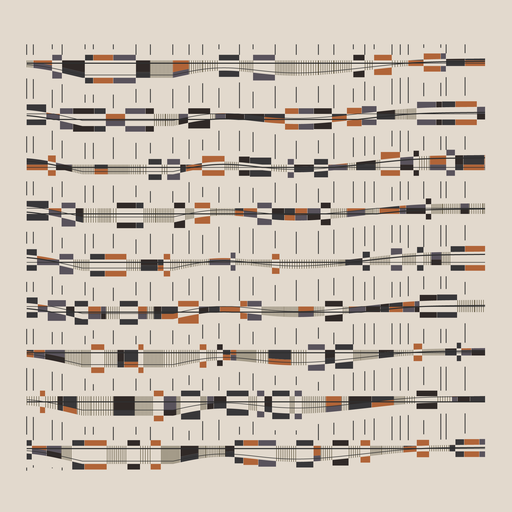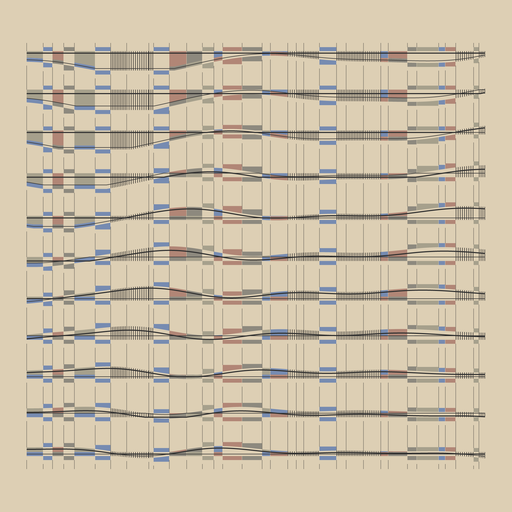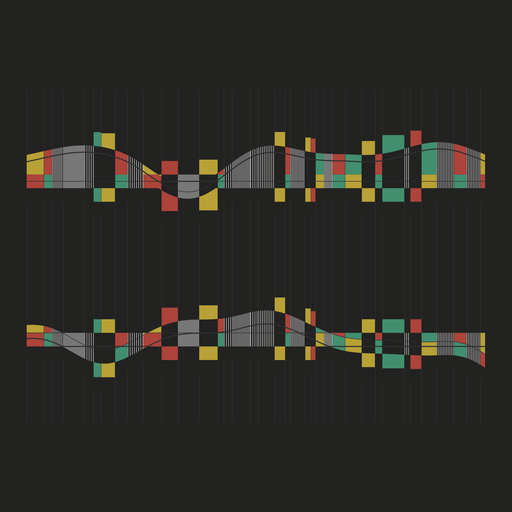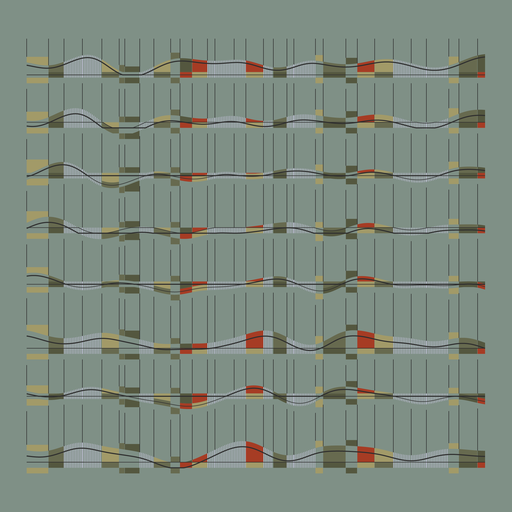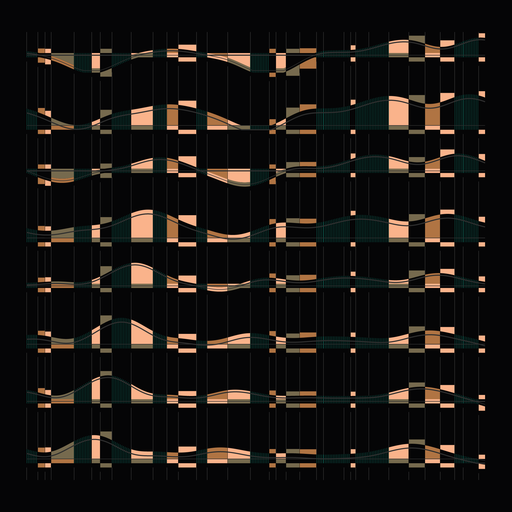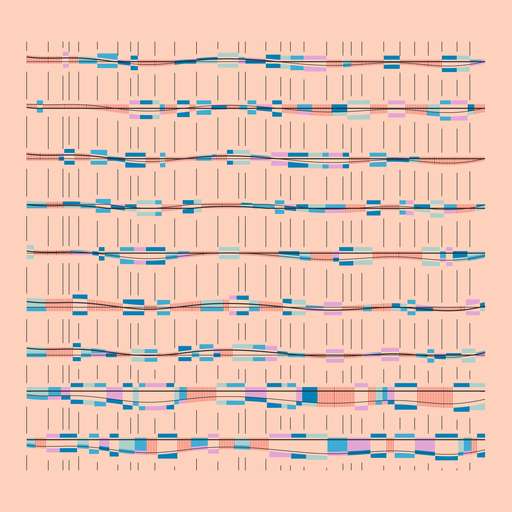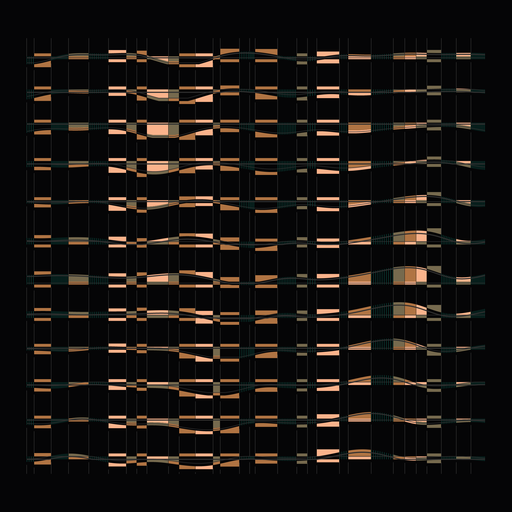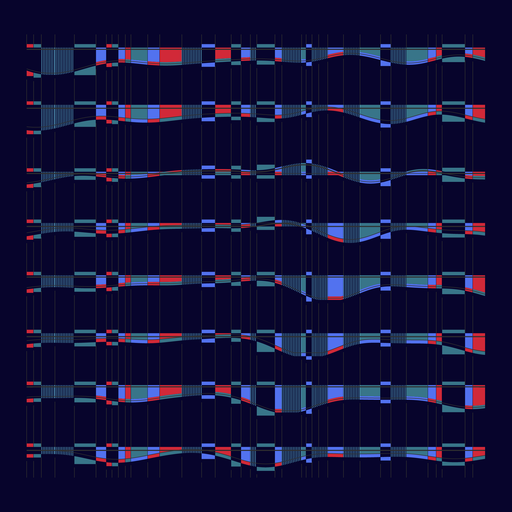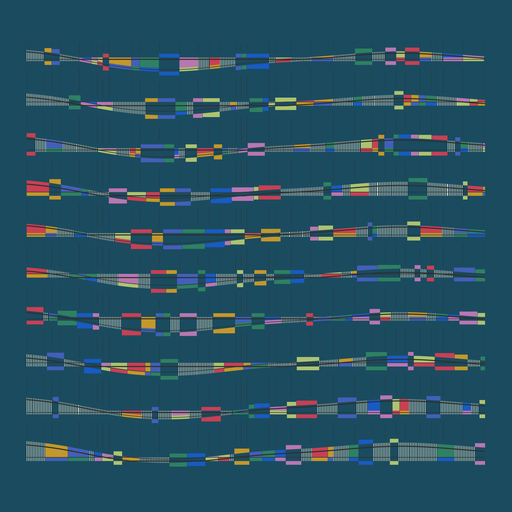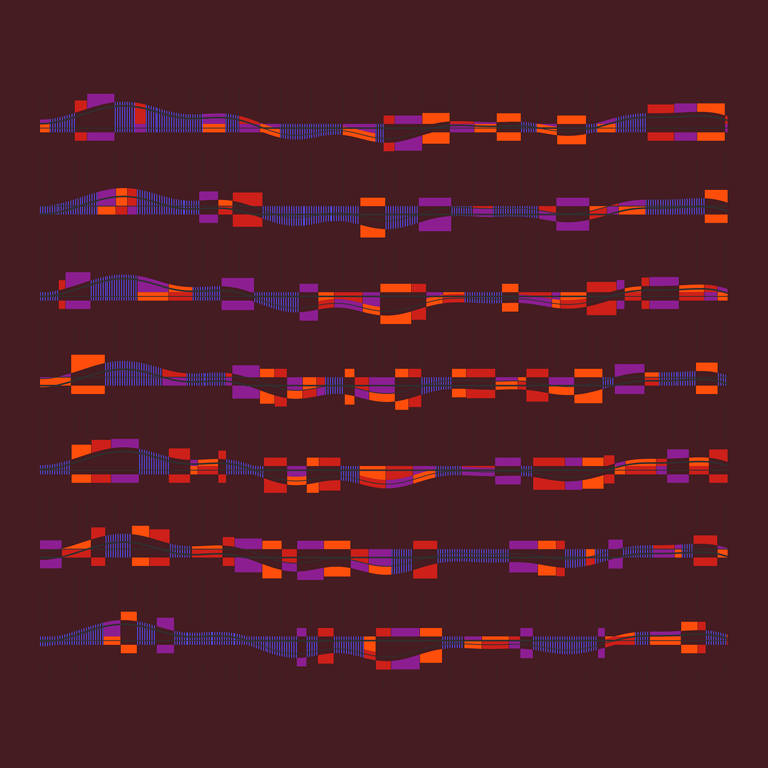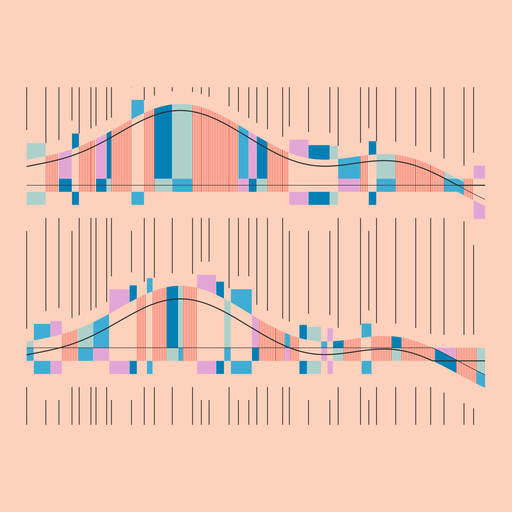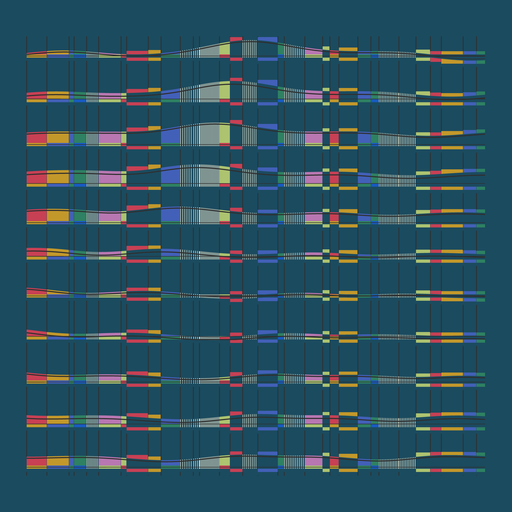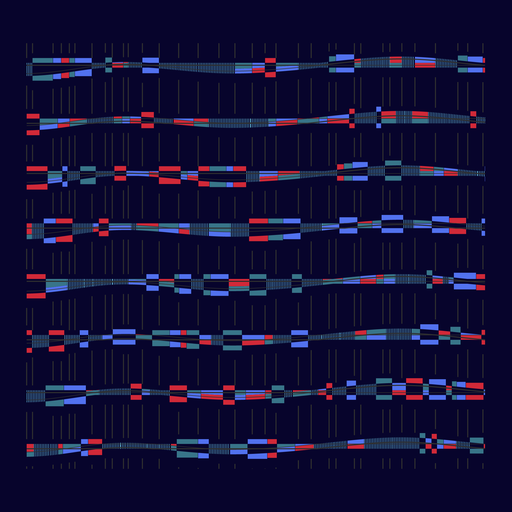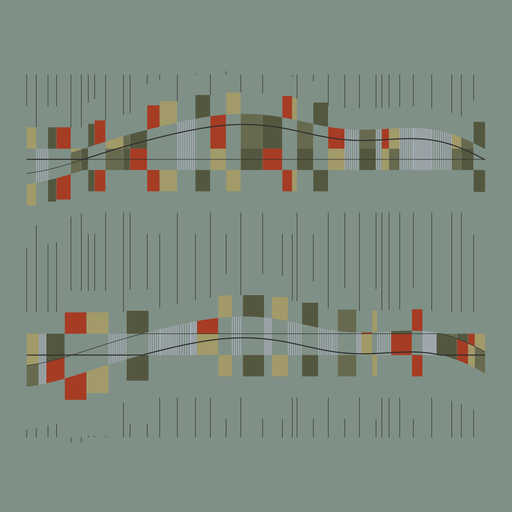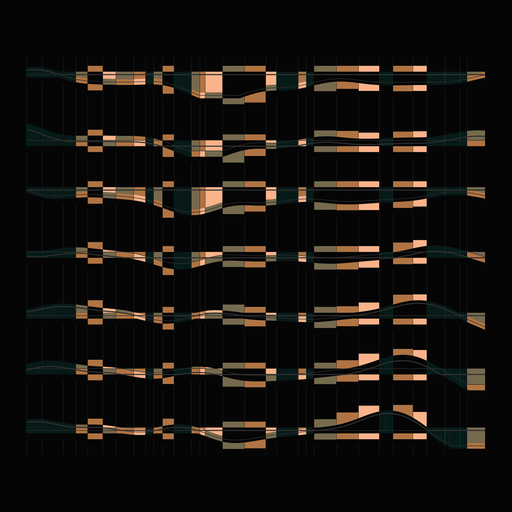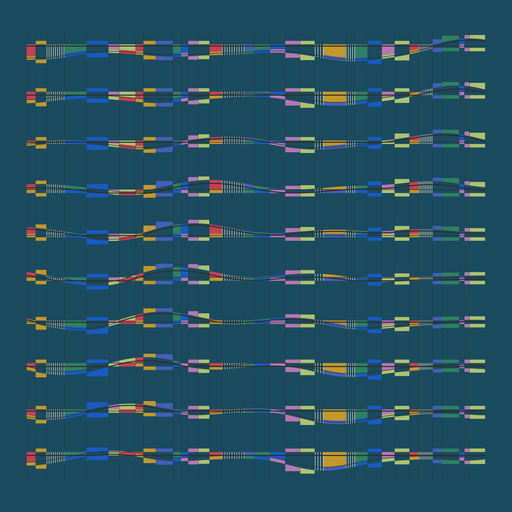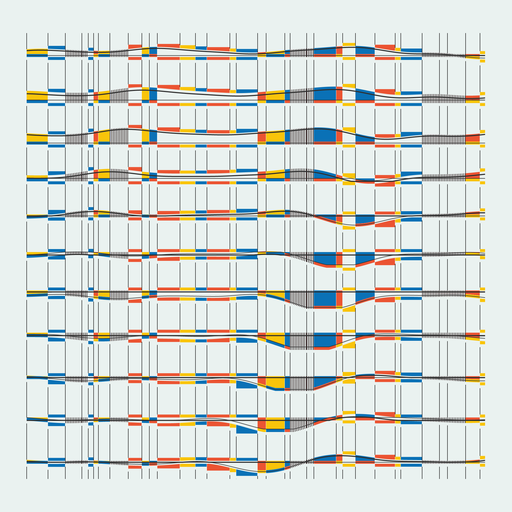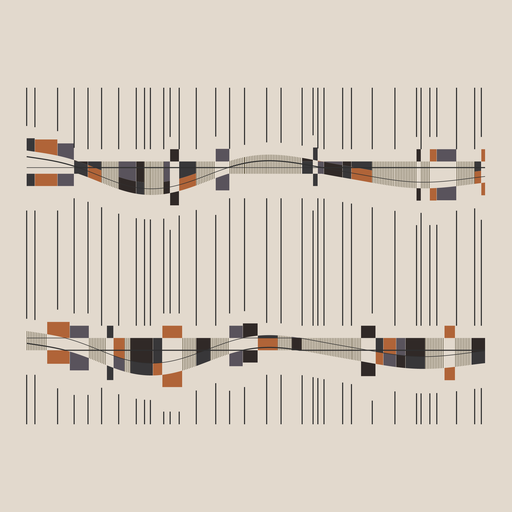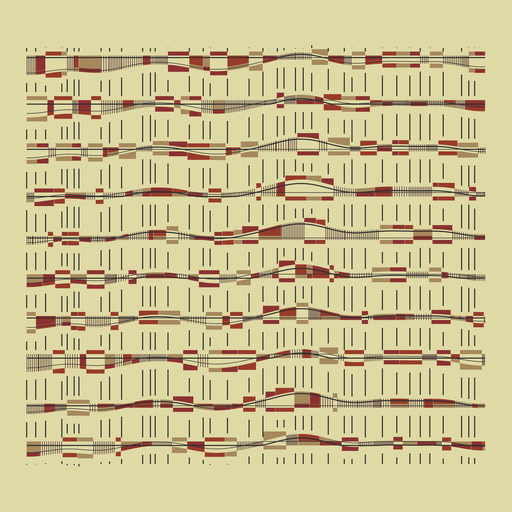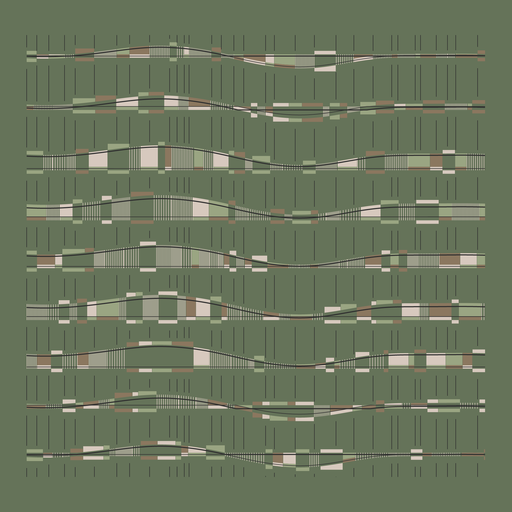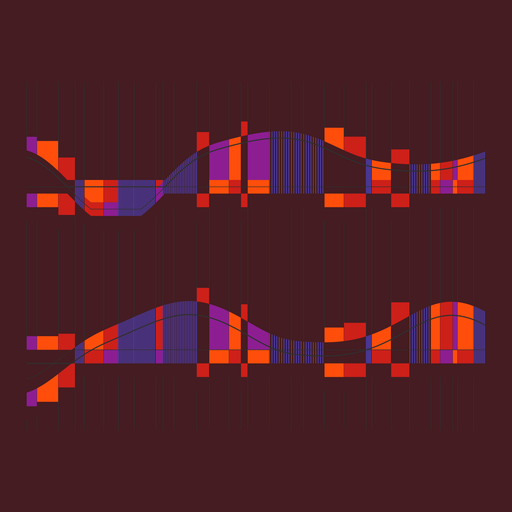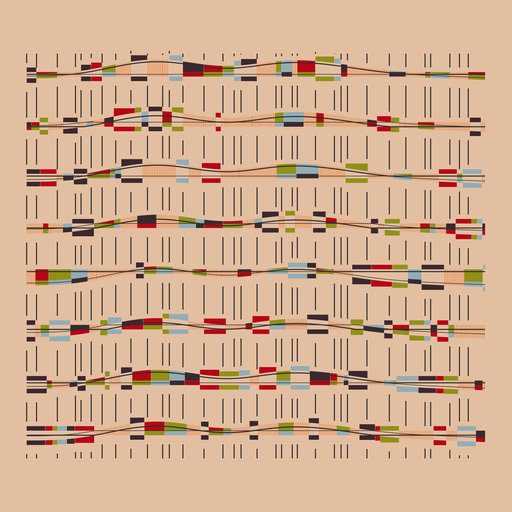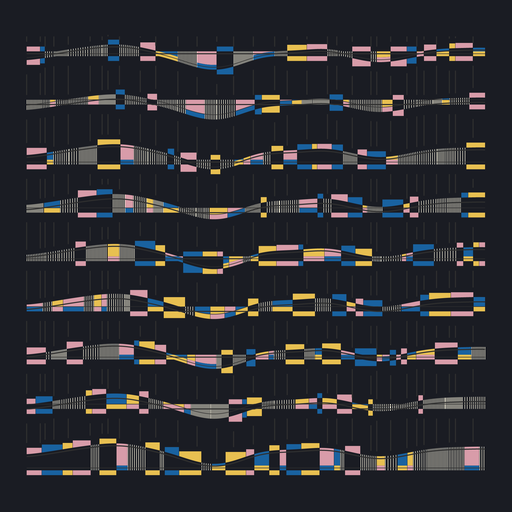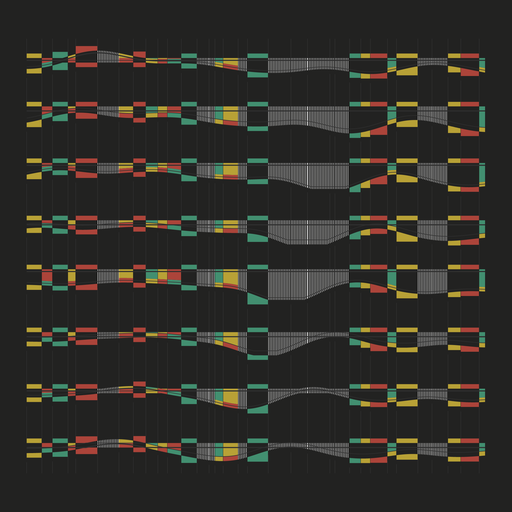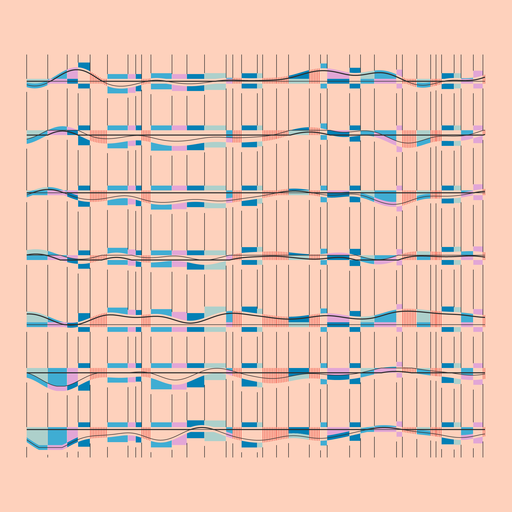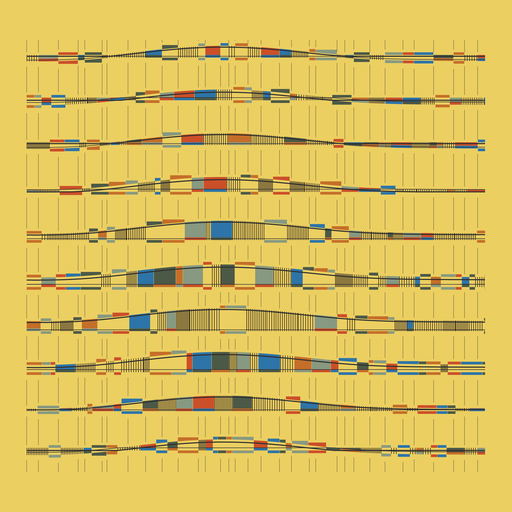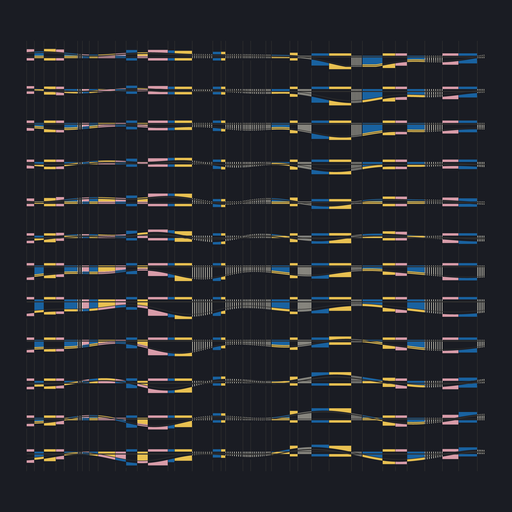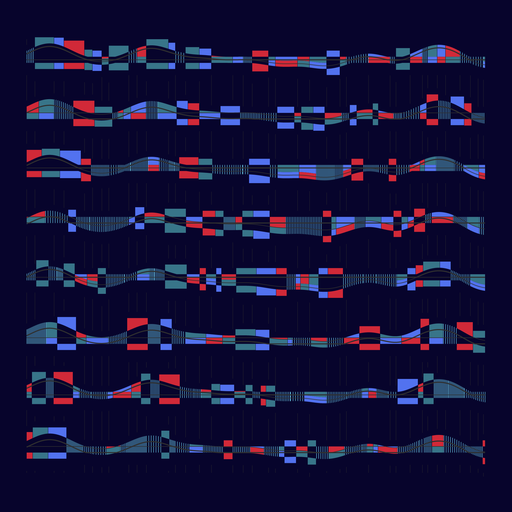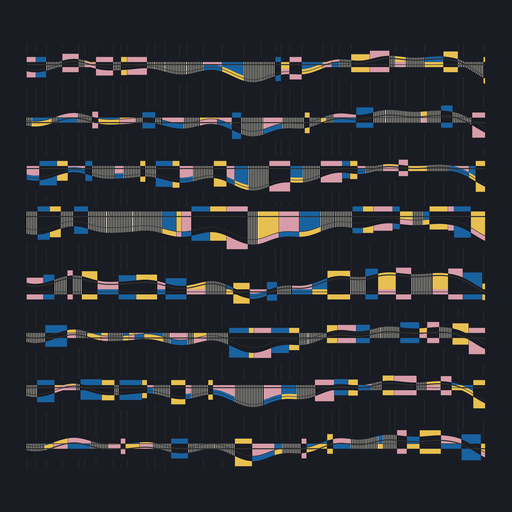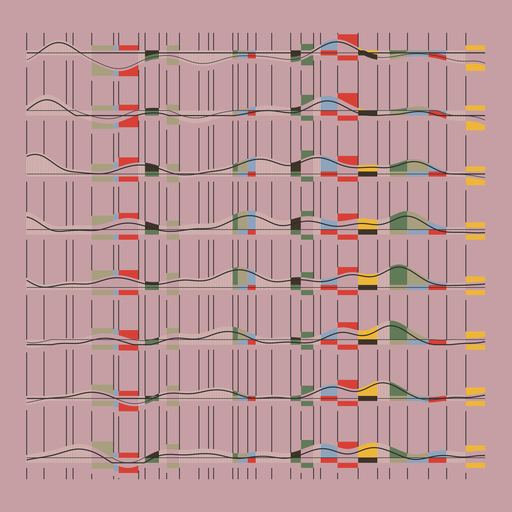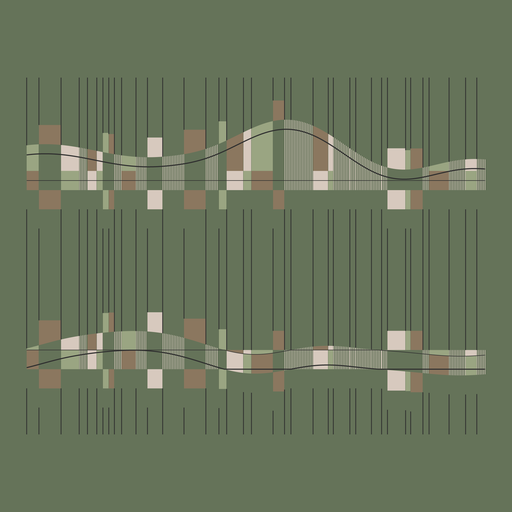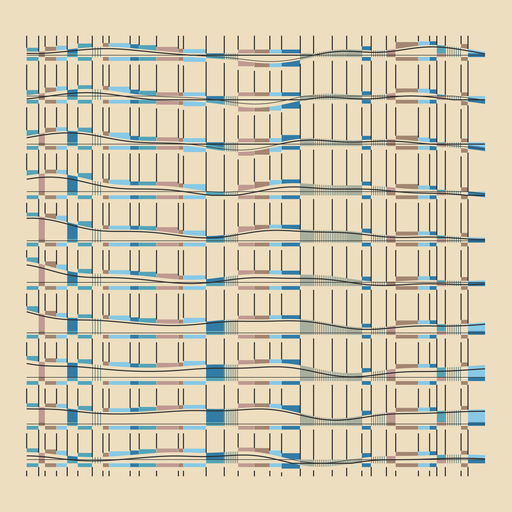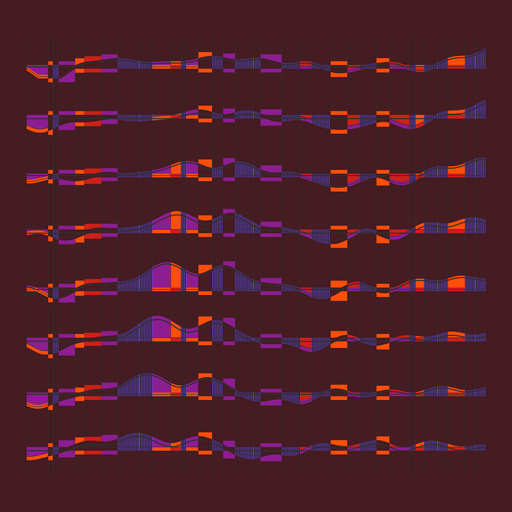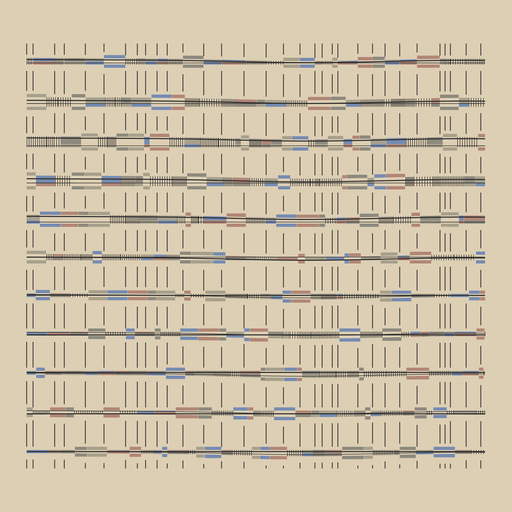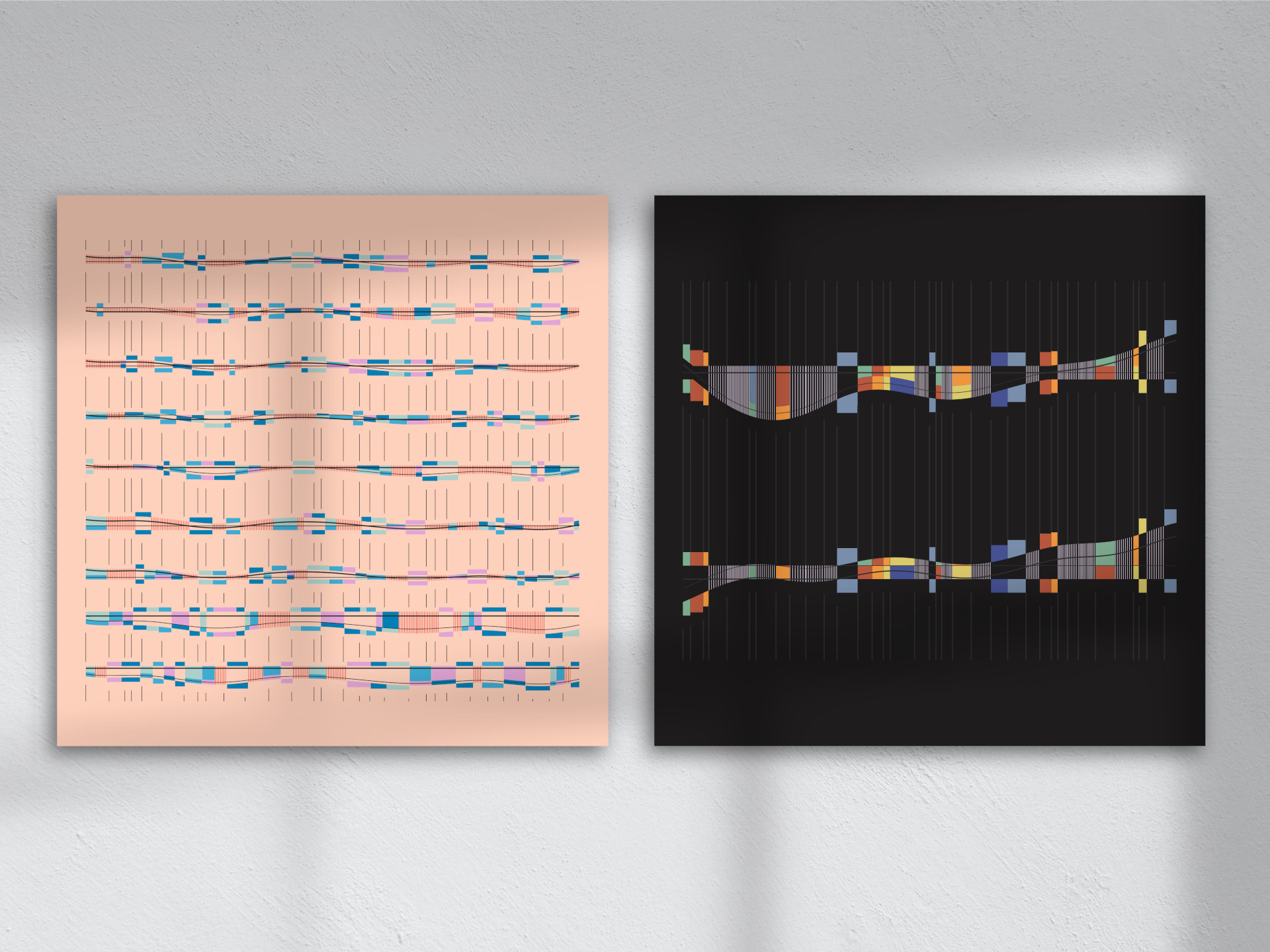
Javascript, plotter, pencil, watercolor, ink, animation, 250 generative editions on Tezos, paper editions in progress, 2023.
Events
At first glance, these curves, juxtaposed and superimposed, appear to be a kind of data analysis and visualization. There is no data to be analyzed here, the shape of each curve is calculated from Perlin noise, but its design reveals a focus of attention, a desire for precision (calculating a threshold). The object analyzed is not a particular piece of data, but the program itself (debug view), and each block shows the choices made by the program to draw the curve.
The program traces the curve in sequences, each part of which can be traced in one of three ways:
- by successive vertical lines
- by a solid shape (with color)
- by two solid shapes enclosing it (top and bottom).
Composition has two main modes:
- either it evolves the size and position of each curve section, keeping the shape of the curve (y) (repeated several times vertically)
- or it evolves the curve each time it is repeated, and the composite sections remain fixed (and the colors are perfectly aligned vertically).
Composition is meant to be abstract, scientific, but it can be interpreted in many different ways: geological strata, audio tracks on a sequencer, CPU utilization rates, I think it’s all a bit of that. It’s about taking a close look at a phenomenon in progress to make sure it’s working properly.
One of the constraints I set myself when creating the program was to use only existing palettes in iconic paintings from the art world. It’s not a question of replacing the original painting with a generative version. It’s more of an experiment, allowing me to apply arbitrary choices to the emotions aroused by my program, and the compositions generated serve to measure and appreciate the vibrations created by certain paintings. In itself, this almost deprives it of its artistic significance, since it becomes a kind of instrument for gaining a synthetic and partial vision of a painting. It can be seen as a refusal of figuration, an object whose (vain and unattainable) aim is to extract the vibration of this or that painting.
—
Aqueduct is part of the inaugural ‘Outliers’ group show curated by Atelier (ateliergen.art).
To read the article about Aqueduct, please visit ateliergen.art.
To see the editions generated from the blockchain, please visit fxhash.xyz.
